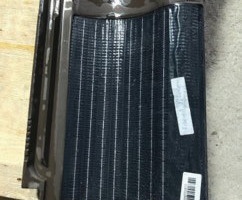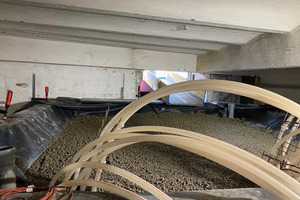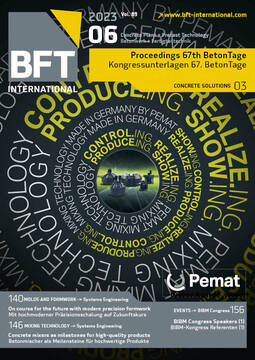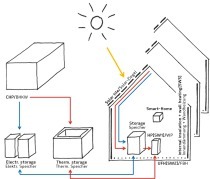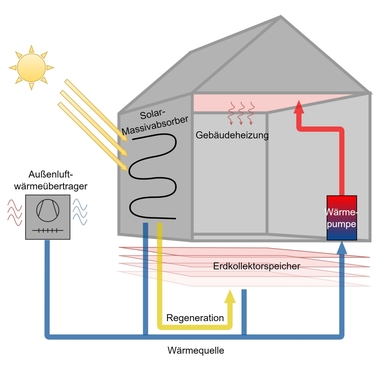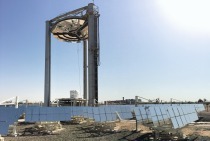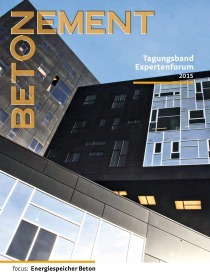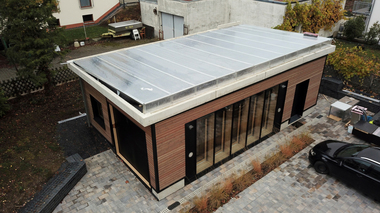Climate-neutral building stock and neighborhoods – Significant contributions from concrete components
Holistic system approaches for constructing climate-neutral buildings and neighborhoods are being developed and tested in a number of major collaborative projects funded by the Federal Ministry for Economic Affairs and Climate Action. Systemic supply concepts that involve, at their core, the generation, use and storage of electrical and thermal energy from local renewable sources are being established to use innovative components and holistic approaches for harvesting locally available solar and environmental heat and providing the space for heating. It is a well-known fact that the supply of renewable energy and the demand for electricity and heat coincide only to a limited extent over the course of the day and year. This is why suitable electrical and thermal energy storage systems are required in which the amount of solar energy that cannot be used directly can be stored for later use along with environmental heat.
Systemic building and neighborhood approaches involve the use of innovative components made of concrete. Generally speaking, concrete and mortar exhibit outstanding mechanical and physical properties. On the thermal side, their heat diffusivity and storage capacity are of particular interest.
To generate solar energy on the building envelope, the Institute of Construction Materials (IWB) at Stuttgart University has joined forces with corporate partners to develop and test, up to the small-scale production stage, solar-hybrid roof and façade systems made of self-compacting high-performance fine-grain concretes. If solar energy or environmental heat is generated or extracted, such a systemic approach requires heat pumps to raise the extracted environmental heat to the temperature level required for the heating of interior spaces depending on the heat transfer system. PV electricity harvested from the roof and/or façade systems is linked to a novel electric compressed-air energy storage unit to maximize the utilization of locally generated power. However, heat must be temporarily stored in thermal storage units if the generated amount of solar and environmental heat cannot be used directly in response to demand. The IWB is developing and testing a variety of heat storage systems. Hot-water storage units use sensible heat; the same applies to storage facilities using hardened concrete as the storage medium. Thermal activation of the foundation slabs and structures in contact with the ground is a method that suits this purpose. In addition, a hybrid solid-concrete heat storage system was installed at the IWB. This system consists of porous concrete and incorporates heat-exchanging units. The porous structure of the hybrid concrete storage system offers a wide range of options for implementing rapid thermal supply and discharge of the system.
The energy-efficient retrofit of the building envelope requires appropriate insulating materials and construction products made from them, which particularly applies to old building stock. At the IWB, mineral-bonded foams, aerogel-based high-performance thermal insulation renders and aerogel-containing infra-lightweight concrete are used. Sustainable and affordable solutions can thus be developed in order to actively contribute to constructing climate-neutral buildings or neighborhoods using low-clinker concretes and mortars.

